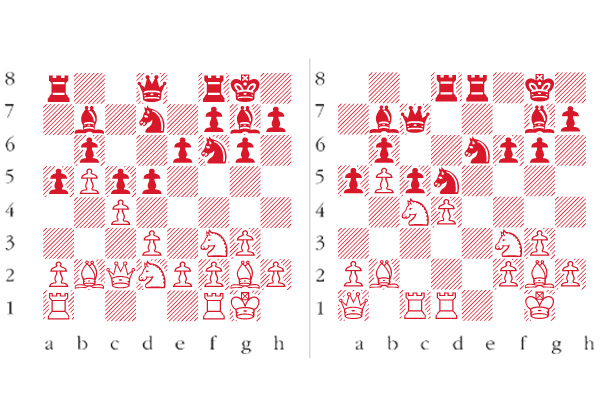Adrian, who died earlier this year, was both an Oxford classicist from Keble College and a Correspondence Chess Grandmaster. One of the outstanding personalities of British chess, he won the UK Correspondence Chess Championship three times, either outright or shared. But his superlative achievement was to win a world title. From 1982 to 1987 he represented Great Britain in the 9th Correspondence Olympiad, winning the World Championship ahead of the USSR, Germany, Hungary and Yugoslavia.
Chess is usually played over the board, whereas correspondence players deliberate at leisure over their moves, then transmit them by post to the opponent. Such slow-motion games can last years or more, and in some cases chess by mail has resulted in spectacular misunderstandings. On one occasion, during a period of heightened global tension, a correspondence player in Germany posed the question to his opposite number: ‘Wieviele Züge?’ which in the chess context translates as ‘How many moves?’ However, Züge also means ‘trains’. The result was an unwelcome visit to the correspondence player from the German security forces.
In spite of his prowess at postal chess, Hollis was also a demon tactician when it came to regular tournament chess.
Hartston-Hollis: Paignton 1966; Reti Opening
1 g3 Nf6 2 Bg2 d5 3 Nf3 g6 4 b4 This set-up, a form of the Reti, has been championed by, amongst others, Vassily Smyslov. 4 … Bg7 5 Bb2 0-0 6 0-0 a5 7 b5 c5 8 d3 b6 9 c4 e6 Black decides to create a pawn centre without worrying if the pawns will end up hanging. 10 Qc2 Bb7 11 Nbd2 Nbd7 (see diagram 1) 12 e3 White has to prevent … d4 and … e5. 12 … Qc7 13 Rad1 Hartston later preferred 13 Rac1. 13 … Rad8 14 Qb1 e5 Somewhat risky, but the only way to make progress. 15 cxd5 Nxd5 16 Nc4 Rfe8 17 Qa1 f6 18 Rc1 Nf8 19 d4 exd4 20 exd4 Ne6 21 Rfd1 (see diagram 2) 21 … Ndf4 Seizing his chance. This sacrifice is necessary because the central position is beginning to look rickety. The sacrifice looks sound as White has terrible weaknesses and his queen is miles away. 22 gxf4 Nxf4 23 Ne3 Nxg2 24 Kxg2 Be4 25 Nf1 Qf4 26 Rc3 cxd4 27 Rcd3 Rd5 28 Qc1 Qg4+ 29 Ng3 Rf5 30 h3 Bxf3+ 31 Kh2 Rh5 32 Rxf3 Qxf3 33 Nxh5 Qxf2+ Now it’s straightforward for Black. 34 Kh1 Qf3+ 35 Kg1 gxh5 36 Bxd4 Qg3+ 37 Kh1 Qxh3+ 38 Kg1 Qg4+ 39 Kh1 Rc8 40 Qd2 Rd8 White resigns
Raymond Keene
Adrian Hollis

issue 20 April 2013




Comments